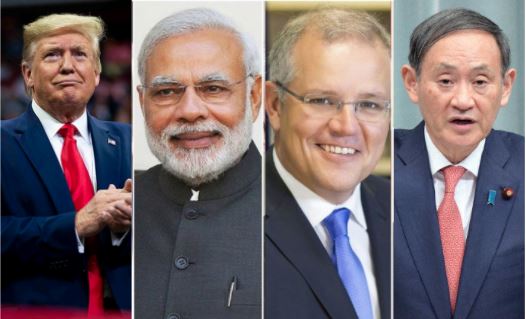The quad is in full swing and is relentlessly pursuing the policies to contain China and decrease the world’s reliance on Chinese exports simultaneously. The USA under Donald Trump has left no stone unturned to regulate chip exports to China and in the process has banned Huawei among other companies. In addition to this, companies like Samsung and TSMC are moving bases out of China to the USA and Samsung is also shifting some businesses to India. As these countries are taking measures to diversify supply chains, the most pragmatic and efficient option right now would be to bring together the Quad members to enable the shifting of the manufacturing and supply chains of high-tech out of China, starting from the semiconductor supply chains.
India, Japan, Australia as well as the USA are together working relentlessly to make themselves less and less reliant on the Chinese for both imports and as an export destination. All these countries and many others are trying to pursue import substitution and export diversification as the most obvious process of diversifying supply chains. The four countries can combine their strengths and provide an alternative to the Chinese semiconductor manufacturing monopoly. Utilizing the US designs with Japanese technological prowess, Australian lithium reserves and India’s engineers as capable and affordable Human Resource, these countries can substitute China as the destination for the global semiconductor supply chain.
If one tries to create multilateral mechanisms from scratch, it would be highly difficult given the significant dissonance even amongst democracies on issues such as competition in the digital economy, privacy, and data governance. As exemplified in an HT article that the European Union (EU) prefers a regulation-heavy approach while the United States (US) prefers a less-restrictive approach and India is considering data localisation religiously. Such divergent outlooks run the risk of derailing collaboration. However, the Quad as an organisation is a special outlier, as its member countries have a common end goal of containing China and discouraging its unharmonious rise and aggressive wolf warrior posturing.
Extending the Quad Security Dialogue to encompass technology will ensure that the Quad is able to address the futuristic security dilemmas and problems. As part of it, shifting the manufacturing and supply chains related to semiconductors out of China will ensure that this critical piece of technological manufacture is not a monopoly of China. It is also important because semiconductors are sort of backbone and are critical to all critical technologies. In addition to this, this specific industry is the most globalised high-value supply chain and no country can single-handedly take this task upon themselves, thus relying on the quad member’s complementary capabilities is the best possible option, for diversification of this industrial supply chain.
The Trump government has been trying hard to encourage the developing countries to avoid Chinese telecommunication hardware and go for available alternatives from some other country, any fellow democracy, as that is a safer option and professes transparency. According to a Wall Street Journal report, the United States Agency for International Development (USAID) is leading this effort to persuade and provide financial support for replacing the hardware and the whole system.
Read more: US will give loans to developing economies to move away from Chinese Telecom Huawei and ZTE.
When the efforts are already at diminishing the probability of China’s dominance over future technology, then coming together to provide an alternative option for the world for semiconductor devices is the most viable and practical option at hand. India can provide a large talent pool of much-needed engineers, as well as the labour force needed to build a cheap and reliable alternative for Chinese exports, the USA and Japan can provide the huge capital that will be needed, as well as build the futuristic technological know-how with India and all of this can be powered by the availability of constant supply of Australian lithium. Thus, the four countries together can build the much-needed alternative and a chip-making powerhouse that will give courage to other countries which want to shift away from relying too much on China but do not have the means to do so.








